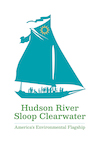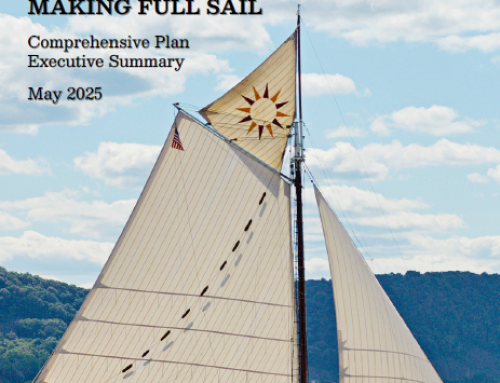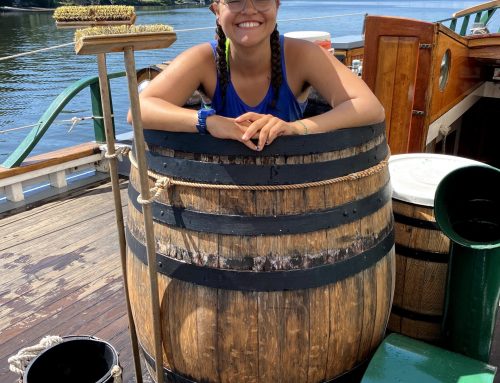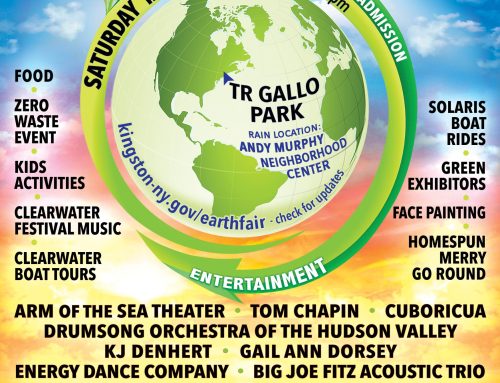FOR IMMEDIATE RELEASE
November 14, 2023
Findings from independent, scientific assessment of publicly available data comes as EPA prepares to release its review of the Hudson River PCBs Superfund site
Hudson Valley, NY — The Friends of a Clean Hudson (FOCH) coalition today released a new, independent, scientific assessment of the Hudson River PCBs Superfund site, finding that the EPA’s “dredging remedy” has failed to ensure the protection of human and environmental health because the concentration of toxic PCBs in the river’s fish and sediment remain higher than anticipated. The new assessment provides the EPA with clear recommendations for next steps, and concludes that the EPA must officially acknowledge, in its pending third “Five-Year Review” of the site, that the dredging remedy is “not protective of human health and the environment.”
The FOCH coalition worked with scientific experts to review publicly available project data accessible since 2015 (last year of dredging) for Upper Hudson sediment and fish to assess whether the dredging remedy will achieve the specific goals set forth in 2002 by the EPA for the Hudson River PCBs Superfund Site. The Superfund site, a designation given to the most dangerously polluted lands and waters in the nation, was established in 1984 after decades of toxic PCB pollution by General Electric (GE). The Hudson remains one of the largest Superfund sites in the nation, covering nearly a 200-mile stretch because of GE’s waste.
“The science is clear: the dredging remedy in the Hudson River did not do enough to make the River safe for people and the environment,” said Scenic Hudson President Ned Sullivan. “EPA must acknowledge the dredging remedy’s failure to meet the essential standard of protecting human health and the environment.”
“Studies of fish collected from the Hudson are telling a clear story: The dredging remedy for the Upper Hudson has missed the mark in reducing the level of PCBs needed for ecological and human health. It simply wasn’t enough. A significant amount of PCB contamination was left behind, and as a result, we are not seeing the drop in PCB concentrations we were promised. Now is the time for EPA to reassess what is needed to get the Hudson on a true path to recovery,” said Tracy Brown, President of Riverkeeper.
The goals for the Superfund site establish target concentrations for PCBs in water, soil, and sediment to reduce harm to river ecology and health risks to humans from consuming fish from the Hudson. PCBs are carcinogens that have been banned in the United States since 1979 because of how harmful they are to human health and the environment. One of the original “forever chemicals,” PCBs do not readily break down once in the environment and can travel great distances through air, water, and soil, making them an especially dangerous form of toxic pollution.
Both current and previous analysis of data in sediment show that six years after dredging, PCB concentrations in the top two inches of surface sediment remain elevated, much higher than predicted by the models that were used by EPA when deciding on remedial actions for the Hudson. Additionally, the rate of improvement in these sediment concentrations post-dredging shows little evidence of significant recovery.
“The first target established by EPA for the reduction in fish PCB concentrations after dredging has not been achieved. The rate of recovery in sediment PCB concentrations to date post-dredging appears to be quite low, and insufficient for fish PCB concentrations to meet the second target set by EPA,” said Kevin Farrar, an independent scientist and former NYS Department of Environmental Conservation (DEC) geologist. “As a result, human health and ecological risks are still well above EPA’s own acceptable risk range and will likely remain so for the foreseeable future. This is not protective of both people and wildlife who consume Hudson River fish, and is not what the public expected from EPA after the dredging work was completed.”
Because sediment and fish PCB concentrations have not declined as anticipated, EPA is forced to rely on risk-avoidance efforts – fish consumption advisories – rather than its risk-reduction cleanup action in order to make any determination other than “not protective” in its pending “Five-Year Review.” The FOCH point out that this strategy is not an effective or just solution for mitigation of health risks, particularly for environmental justice communities who rely on subsistence fishing, placing far too much of the burden on people using the river, rather than on the polluter, GE, or the government agency responsible for protection of human health and environment, the very role the EPA is charged with.
Additionally, risk avoidance does not address ecological risks to wildlife that are dependent on the river habitat and ecosystem, where consumption advisories are meaningless.
“Analysis of post-dredging PCB concentrations in Upper Hudson black bass, bullhead, and yellow perch show that concentrations are higher and the rate of recovery is slower than the models predicted in the Record of Decision (ROD) evaluation of alternative remedies for the Hudson. PCB concentrations in yearling pumpkinseed, important forage fish, remain highly elevated and show little evidence of recovery, indicating that the food web in the Upper Hudson is not making much progress toward recovery,” said L. Jay Field, Principal at Jayfield Environmental Consulting and retired NOAA scientist.
“Across the Hudson Valley, people rely on fish from the Hudson River as a food source. Based on the data, we are not on track to meet the goals needed to protect communities or the Hudson River, and we hope the gravity of this reality will be acknowledged in EPA’s upcoming Draft Five-Year Review,” said David Toman, Executive Director of Hudson River Sloop Clearwater.
“GE’s spot-cleanup of a 40-mile stretch of the Upper Hudson left localized and significant quantities of PCBs in the river sediment that continue to make fish unsafe to eat, especially affecting women, children, and subsistence fishermen from communities of color, immigrants, and economically disadvantaged populations,” said Environmental Justice pioneer Dr. Aaron Mair.
“It is clear from the most recent sampling and analysis that GE’s alleged cleanup of the Hudson River is not adequately protective of human health or the environment. The river remains significantly contaminated with PCBs and thousands of New Yorkers, many of whom represent immigrant, low income and minority communities, regularly eat the fish they catch from the Hudson for sustenance – despite the health advisories. People simply trust long-standing traditions over nuanced warnings, and barring citizens from eating fish does not represent the kind of justice Hudson River communities need. True justice requires the EPA to fund and implement a meaningful clean-up,” said Roger Downs, Conservation Director, Sierra Club Atlantic Chapter.
“To date, it’s been a tale of two rivers. The Record of Decision (ROD) pertains to the entire Hudson. It’s time to focus the remedy on the lower river,” said Gil Hawkins, Environmental Director, Hudson River Fishermen’s Association.
As required by the federal Superfund law, EPA must conduct a review of hazardous waste sites every five years where cleanups do not remove all contaminants from the site, and make that review available for public comment. While the date has not been announced, it is anticipated that EPA will release its draft third “Five-Year Review” for public comment before the end of 2023.
###
About the Authors
The independent, scientific review was prepared by Kevin Farrar, retired NYSDEC Geologist and L. Jay Field, Jayfield Environmental Consulting, Principal and retired NOAA scientist.
Mr. Farrar is a retired Engineering Geologist from the New York State Department of Environmental Conservation (NYSDEC). While at NYSDEC, Mr. Farrar managed a unit responsible for remediation of major hazardous waste sites in New York State, including the Hudson River PCBs Site. He has over 32 years of experience of working in the hazardous waste remedial program. He led the NYSDEC efforts on remedial programs at several major Superfund sites and is considered a subject matter expert in the fields of Site Characterization, Remedy Selection, and Remediation Interpretation of Environmental Quality and Exposure Data and Conceptual Site Model Development and Refinement for hazardous waste sites. Mr. Farrar received his BS (Geology) from the State University of New York at New Paltz
Mr. Field is the author of numerous peer-reviewed publications on PCBs and a retired marine biologist and environmental scientist from NOAA’s Office of Response and Restoration (ORR) in Seattle. His major areas of expertise include the fate and effects of PCBs and dioxins, development of sediment quality guidelines, ecological risk assessment, the evaluation of physical processes such as sediment transport and hydrodynamic models, geochemistry, toxicology, fisheries, aquatic biology, and database management. He received his MS in Fisheries Biology from the University of Washington School of Fisheries, and his BA in Biology (Honors) from the University of Michigan.
About Scenic Hudson
Scenic Hudson’s mission is to sustain and enhance the Hudson Valley’s inspirational beauty and health for generations to come. Motivated by the beautiful land and the extraordinary people of the region, we use our decades of expertise in preservation, land use, community-based advocacy, and strategic planning to make the valley a better place to live, work, and play for everyone. www.scenichudson.org
About Riverkeeper
Riverkeeper protects and restores the Hudson River, and safeguards drinking water supplies through community partnerships, science, and law. Our core programs improve water quality, restore habitat for an abundance of life, and address the impact of climate change on our waterways. Founded in 1966 as the Hudson River Fishermen’s Association, Riverkeeper became the model for more than 320 Waterkeeper organizations around the world and helped establish globally-recognized standards for waterway and watershed protection. We continue to work toward the goal of a swimmable, fishable, and drinkable Hudson River for all. Learn more, get updates, and support our work by visiting www.riverkeeper.org.
About Hudson River Sloop Clearwater
Hudson River Sloop Clearwater is a member-supported, nonprofit organization whose mission is to protect the Hudson River by inspiring lifelong stewardship of the river and its tributaries through education and advocacy.
About Dr. Aaron Mair
Dr. Aaron Mair is an environmental justice pioneer intersectionality working in the spaces of, health, environment, voting rights, and Disparities over the last 40 years; a 35-year veteran urban environmental activist; regional and national environmental justice organizer; 57th national president of the Sierra Club; and Adirondack Council’s Wilderness Campaign Director “Clean Water, Jobs and Wilderness”.
About Sierra Club Atlantic Chapter
The Sierra Club Atlantic Chapter’s mission is to explore, enjoy, and protect the wild places of the earth; to practice and promote the responsible use of the earth’s ecosystems and resources; to educate and enlist humanity to protect and restore the quality of the natural and human environment; and to use all lawful means to carry out these objectives.
About Hudson River Fishermen’s Association
The Hudson River Fishermen’s Association is a group of recreational fishermen who make active use of the N.Y. Bight and the surrounding water system and are concerned with the present and future state of these fisheries. Our objectives are to encourage the responsible use of aquatic resources and protection of habitat. We assist where possible in efforts to abate pollution and promote sportfishing and the management of that recreation.
Contacts:
Riley Johndonnell, rjohndonnell@scenichudson.org,
(mobile) 415-797-0110 (office) 845-473-4440 x222
Leah Rae, lrae@riverkeeper.org, 914-715-6821
Amber Stewart, amber@clearwater.org, 845-265-8080 x7108





